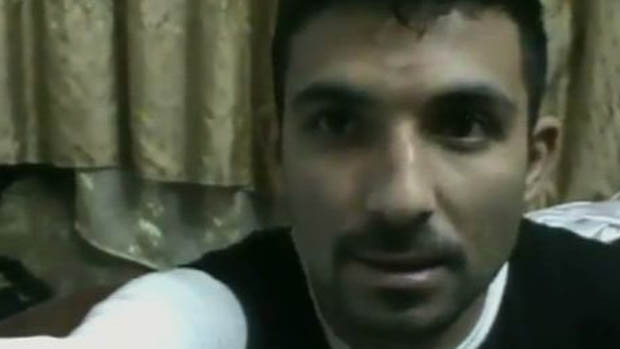Syria’s citizen journalists: ‘We expect to be killed’
As the death of Sunday Times reporter Marie Colvin sparks a new wave of outrage at the bloodshed in Homs, Channel 4 News looks at the unofficial journalists dying to tell their story.

In one of Rami al-Sayed’s recent video messages, he said: “The situation in Baba Amr is catastrophic – we are being treated as if we are not humans.”
In another, he simply stated: “We expect to be killed any minute.”
The 26-year-old, one of Syria‘s many citizen journalists, was killed on Tuesday in Baba Amr, a suburb of Homs. It is believed he died from shrapnel wounds when the building he was in was shelled. His last report spoke of airstrikes on Babr Amr.
He said: “We woke up in the morning to the sound of indiscriminate bombs, mortars, rockets and aerial bombardment. This was especially in heavily-populated areas.
“Baba Amr is facing a genocide right now.”
Syriapioneer is his group and we know the others [in the group] are going to try to keep the feed up. Hans Eriksson
Al-Sayed was one of the first citizen reporters to film and share pictures from Homs via YouTube and live video broadcasting service Bambuser.
With its servers in Sweden, Bambuser supplies software that enables anyone to broadcast live from their computers or their phones.
Hans Eriksson from Bambuser told Channel 4 News: “In Rami’s case, he used it to distribute footage from one of the world’s worst places right now. You could hear the constant shelling and gunfire over the last 14 days in Homs.
“Syriapioneer is his group and we know the others [in the group] are going to try to keep the feed up.”
Andy Carvin, a strategist at NPR and a pioneer of social media newsgathering, tweeted: “They can kill Syria Pioneer but they can’t stop his signal. His partners are live-streaming from his account right now.
‘They’re willing to take the risk’
Rare broadcast-quality pictures of the battle for Homs, shown for the first time on Channel 4 News, reveal the high-risk tactics of anti-government forces.
The film (above) shows fighters taking huge gambles, firing back at pro-Assad troops as they run openly through the wrecked streets of Homs.
The citizen journalists using mobiles, laptops and social media to record and spread news of these battles are no less fearless.
“There’s is a different culture and the most important thing to them is to get the story out,” said Erikkson, who declined to state the exact number of Syrians using the service, but said there were many in “all the major cities”.
“They discovered Bambuser themselves probably through activists in the Arab Spring. These are highly-educated tech-savvy people.
“We’ve give them advice on how to use Bambuser in safest way possible – we have a 24/7 dialouge with peopel in Syria.
“To them the most important thing is to get footage out for the world to see – they ask us to spread the message.
“We’re constantly telling them that ‘that’s not a safe place to be.’
“But they’re willing to take risk.”